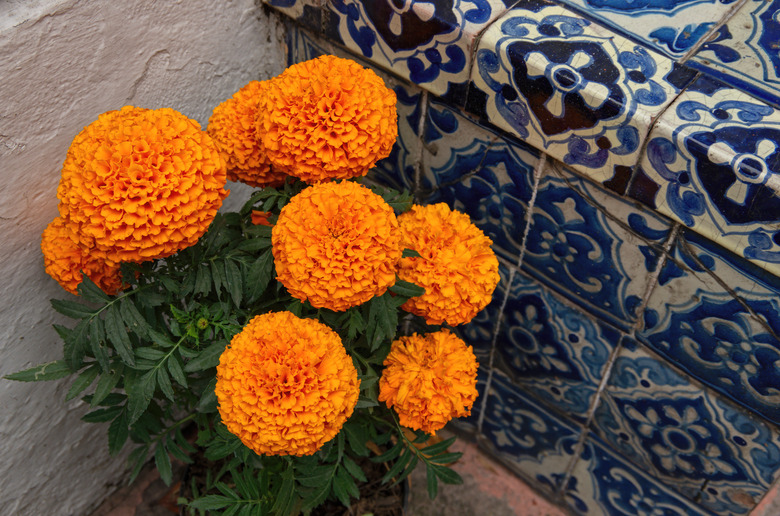Can You Plant Marigolds In A Pot?
We may receive a commission on purchases made from links.
Marigolds are sunny annuals that add bright color to your garden from late spring until the first frost in autumn. If you'd love to grow the bright bloomers in containers, don't hesitate, as marigolds are well-suited for container growing. Plant marigolds alone in a patio container or window box and they'll take center stage, or plant them in combination with a variety of colorful annuals such as petunias, geraniums, or zinnias.
Prepare a Container
Prepare a Container
Fill a container to within an inch from the top with any good-quality commercial potting mix. Any sturdy container with a drainage hole in the bottom will work well, as marigolds quickly rot in wet soil.
Don't use regular garden soil in your container, as garden soil will become so compacted in the pot that water won't reach the roots of the marigolds. Garden soil may also contain bacteria, insects, and weed seeds.
Plant Marigold Bedding Plants
Plant Marigold Bedding Plants
Purchase marigold bedding plants at a greenhouse or garden center. Marigolds are available in a variety of sizes and colors, and all are appropriate for container growing.
Remove each marigold from the nursery container. Dig a small hole with a trowel, then place the marigold in the hole at the same depth it was planted in the nursery container. Pat potting mix gently around the roots.
Marigolds can be planted much closer in containers than in the ground. Allow about 3 inches between small varieties and up to 5 inches for giant marigolds. Locate your marigolds where the plants will be in sunlight for at least six to eight hours per day.
Irrigate Marigolds After Planting
Irrigate Marigolds After Planting
Water the marigolds immediately after planting, and keep the soil moist until you see new growth. Thereafter, marigolds are drought-tolerant plants that won't do well in soggy soil, but benefit from an occasional watering during hot summer weather.
When you water, don't stint. Water the plants deeply, allowing water to run freely through the drainage hole; then water again when the soil feels fairly dry.
Fertilize Marigolds Weekly
Fertilize Marigolds Weekly
Fertilizer is important for container-grown marigolds, as the plants are unable to draw nutrients from the ground. Feed marigolds every week, using a water-soluble fertilizer mixed according to the directions on the package.
If the package directions suggest a monthly feeding, dilute the solution by one quarter, which will be appropriate for weekly feedings. Alternatively, use a timed-release fertilizer applied according to the package recommendations.
Deadhead Wilting Flowers
Deadhead Wilting Flowers
Deadhead or pinch off spent blooms regularly. Pinch off the blooms with your fingernails or garden shears as soon as they wilt, and don't wait until the flowers become completely dead.
Blooms allowed to remain on the plant will cause the plant to go to seed and blooming will be decreased. Deadheading will encourage your marigolds to bloom profusely until autumn.
